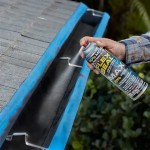How to Change Old Basement Windows
Basement windows, often overlooked, play a crucial role in a home's overall health and functionality. They provide natural light, ventilation, and a potential escape route in case of emergency. However, older basement windows can become drafty, leaky, and aesthetically unappealing. Replacing them can significantly improve energy efficiency, enhance curb appeal, and increase the overall value of a property. This article provides a comprehensive guide on how to change old basement windows, covering the necessary steps, tools, and considerations for a successful installation.
Before embarking on the project, a thorough assessment of the existing windows is essential. This includes identifying the type of window (e.g., hopper, awning, sliding), the material of the frame (e.g., wood, metal, vinyl), and the extent of any damage. Look for signs of rot, rust, cracks, or condensation between panes of glass. Documenting these observations will help in selecting the appropriate replacement windows and planning the installation process.
Furthermore, it's crucial to check local building codes and regulations regarding window replacement. Some jurisdictions may require permits or have specific requirements for window size, egress, and energy efficiency. Contacting the local building department before starting the project can prevent potential delays and ensure compliance.
Key Point 1: Preparing for the Replacement
Preparation is key to a smooth and efficient window replacement. This involves gathering the necessary tools and materials, as well as properly preparing the work area. The following steps outline the essential elements of this stage:
Gathering Tools and Materials: The following tools and materials will be needed for the project:
- New replacement windows (ensure accurate measurements)
- Safety glasses and gloves
- Pry bar
- Screwdrivers (various sizes)
- Utility knife
- Caulk gun and exterior-grade caulk
- Insulation materials (e.g., fiberglass insulation, spray foam)
- Level
- Measuring tape
- Hammer or mallet
- Shims
- Drill (with various bits)
- Putty knife or scraper
- Drop cloths or plastic sheeting
- Reciprocating saw (optional, for stubborn windows)
Preparing the Work Area: Protecting the surrounding area is crucial to minimize mess and prevent damage. Lay down drop cloths or plastic sheeting to cover the floor and furniture near the window being replaced. Remove any curtains, blinds, or other window coverings. Clear any debris or obstacles from around the window, both inside and outside the basement.
Removing the Old Window: Carefully remove the old window from its frame. If the window is painted or caulked to the frame, use a utility knife to break the seal. Use a pry bar to gently loosen the window from the frame, working around the perimeter. Be cautious not to damage the surrounding wall or foundation. If the window is particularly stubborn, a reciprocating saw may be necessary to cut through any remaining fasteners or connections. Once the window is free, carefully lift it out and dispose of it properly.
Cleaning the Opening: After removing the old window, thoroughly clean the opening. Remove any old caulk, paint, or debris using a putty knife or scraper. Inspect the frame for any signs of rot or damage. If necessary, repair or replace any damaged sections of the frame before installing the new window. Ensure the opening is clean, dry, and free of any obstructions.
Key Point 2: Installing the New Window
The installation process requires careful attention to detail to ensure a proper fit and a weathertight seal. The following steps outline the process of installing the new basement window:
Preparing the Window Opening: Before installing the new window, inspect the opening for any irregularities. Use shims to level and plumb the opening if necessary. Ensure the opening is slightly larger than the window to allow for a comfortable fit and adjustment. Apply a bead of caulk around the perimeter of the opening to create a weathertight seal.
Inserting the New Window: Carefully lift the new window into the opening. Center the window and ensure it is level and plumb. Use shims to adjust the window's position until it is perfectly aligned. Check the window's operation to ensure it opens and closes smoothly. Once the window is properly positioned, secure it to the frame using screws or nails, following the manufacturer's instructions. Ensure the fasteners are long enough to penetrate the frame and the surrounding wall or foundation.
Insulating Around the Window: After securing the window, fill the gaps around the frame with insulation. Fiberglass insulation or spray foam can be used for this purpose. Ensure the insulation is properly packed to prevent drafts and heat loss. Avoid over-compressing the insulation, as this can reduce its effectiveness. Trim any excess insulation and smooth the surface.
Caulking the Window: Apply a bead of exterior-grade caulk around the perimeter of the window, where it meets the frame and the surrounding wall or foundation. This will create a weathertight seal and prevent water infiltration. Smooth the caulk with a wet finger or a caulking tool to create a clean and professional finish. Allow the caulk to dry completely before painting or applying any finishing touches.
Key Point 3: Finishing Touches and Considerations
Once the new window is installed, a few finishing touches will enhance its appearance and performance. Additionally, some important considerations should be kept in mind to ensure a successful and long-lasting installation.
Painting or Staining: If desired, paint or stain the window frame to match the surrounding decor. Use a high-quality exterior paint or stain that is specifically designed for use on windows. Apply multiple coats for a durable and long-lasting finish. Allow the paint or stain to dry completely before using the window.
Adding Interior Trim: Install interior trim around the window to conceal the gaps between the window frame and the wall. Choose a trim style that complements the room's decor. Secure the trim to the wall using nails or screws. Caulk the edges of the trim to create a clean and finished look.
Ensuring Proper Drainage: Ensure the area around the window is properly graded to prevent water from pooling. The ground should slope away from the foundation to allow water to drain away. Consider installing a window well with a drainage system to further protect the window from water damage. Clean the window well regularly to remove any debris that may block the drainage.
Security Considerations: Consider adding security features to the basement window to prevent break-ins. Install window locks or burglar bars to deter intruders. Ensure the window is properly secured and cannot be easily forced open. Consider installing a security system with window sensors to alert you of any unauthorized entry.
Maintaining the Windows: Regularly inspect the windows for any signs of damage or wear. Clean the windows and frames regularly to remove dirt and debris. Re-caulk the windows every few years to maintain a weathertight seal. Address any issues promptly to prevent further damage and extend the lifespan of the windows.
Choosing the Right Windows: Selecting the appropriate replacement windows is crucial. Consider factors such as energy efficiency, durability, and aesthetics. Vinyl windows are a popular choice due to their low maintenance and excellent insulation properties. Wood windows offer a classic look but require more maintenance. Ensure the windows meet local building codes and energy efficiency standards.
Professional Installation: While this article provides a comprehensive guide, some homeowners may prefer to hire a professional window installer. This can be a good option if you lack the necessary skills or experience, or if the project is particularly complex. Obtain multiple quotes from reputable installers and carefully review their qualifications and experience. Ensure the installer is licensed and insured. A professional installation can ensure a proper fit and a weathertight seal, minimizing the risk of problems down the road.
Replacing old basement windows is a worthwhile investment that can improve a home's energy efficiency, aesthetics, and security. By following these steps and considerations, homeowners can successfully complete this project and enjoy the benefits of new, high-quality basement windows.

How To Replace A Basement Window Fine Homebuilding

How To Replace A Basement Window In Concrete

How To Replace A Basement Window Fine Homebuilding

How To Replace A Basement Window Fine Homebuilding

Basement Window Replacement

6 Reasons To Replace Your Basement Windows News And Events For Systems Inc

How To Remove Basement Window Steel Frame Doityourself Com Community Forums

How To Replace A Basement Window

How To Replace A Basement Window In Concrete

How To Replace A Basement Window In Concrete







